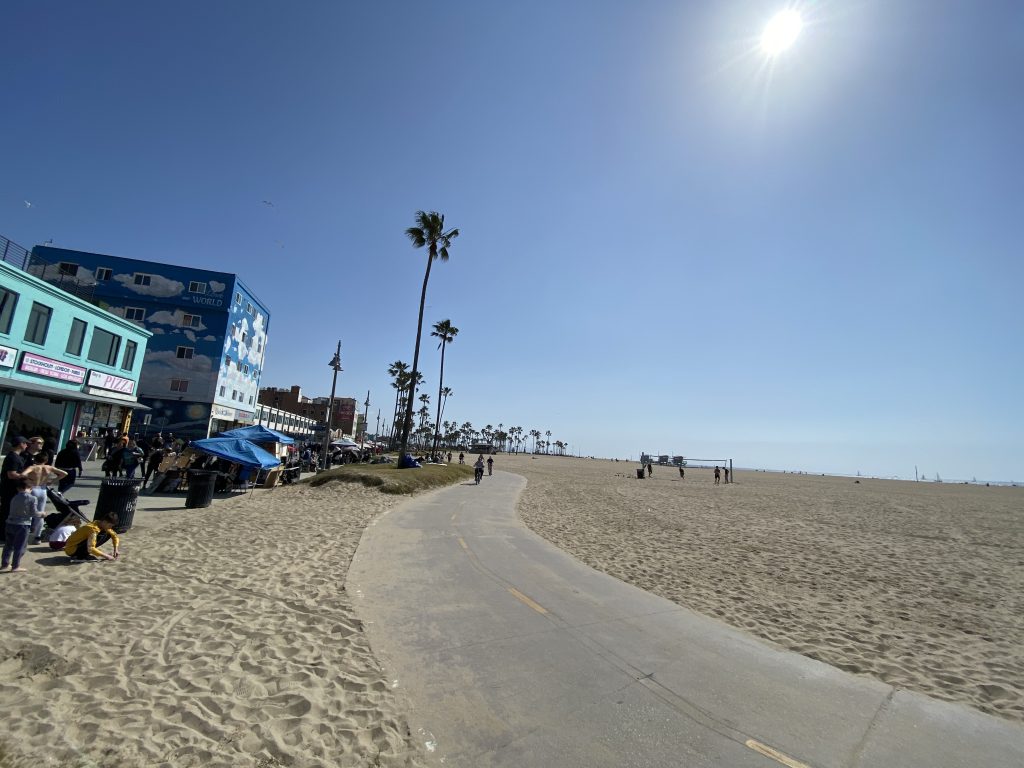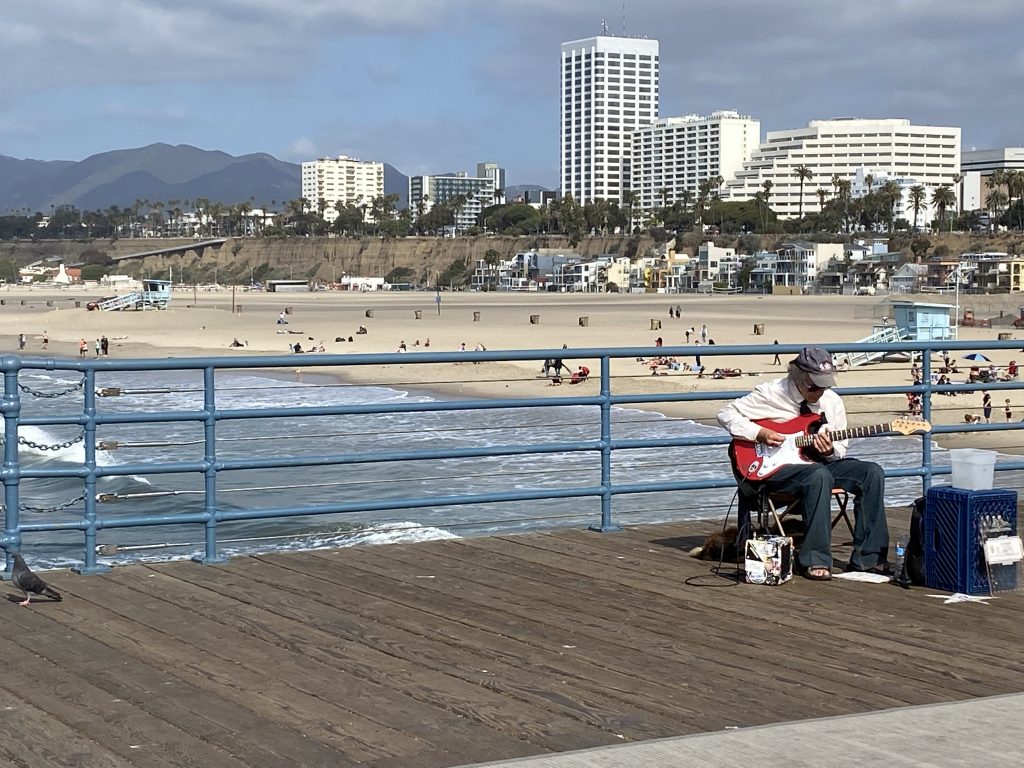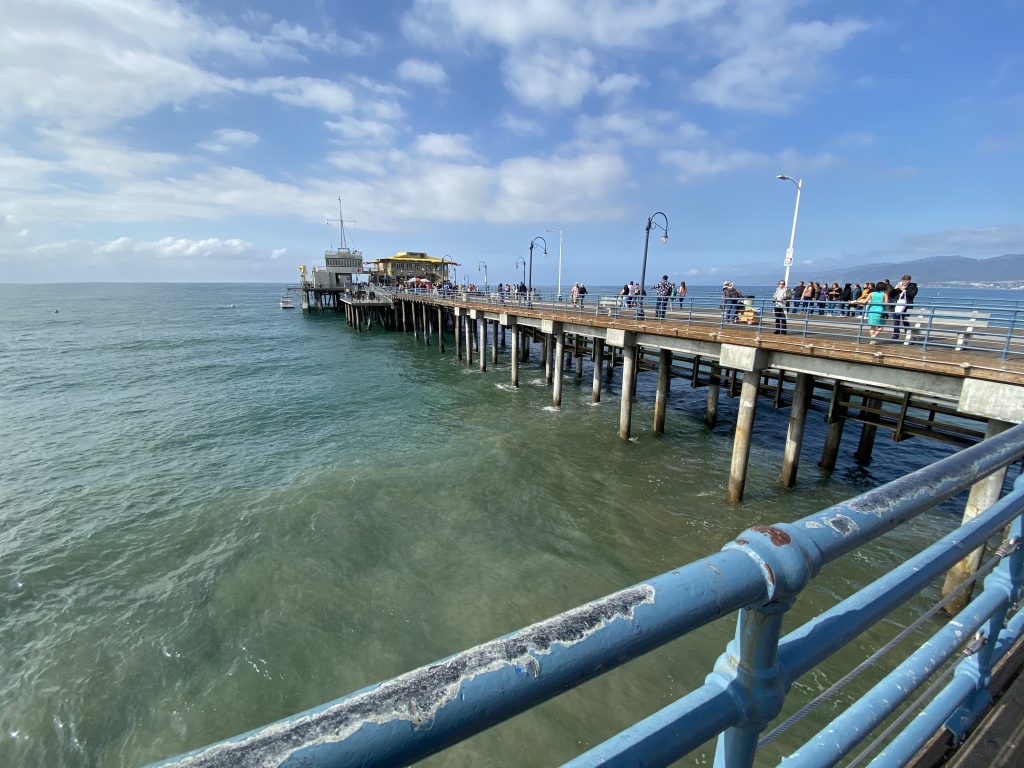Even when tourist mythology is better than the real thing, there’s still nothing quite like a beach town boardwalk.
Carnival rides, junk food, way too many people and bad souvenirs – that’s your typical boardwalk and the famed Santa Monica Pier and Venice Beach are no exception. I’ve been to L.A. many times but never spent any quality time at these two legendary sites. I decided to remedy that.

I arrived at Santa Monica’s best known spot early one morning, before the crowds. What an experience to witness the pier as largely a ghost town. Unopened food stands, vacant game stalls and quiet roller coasters made for an almost peaceful energy. The old dock boards creaking underfoot I imagined a time when the dock was used for a business other than tourists.

In stark contrast, Venice was packed by the time I arrived later that same afternoon. Artists, tourists and locals collided in that mess of activity. Some people cycled for exercise while others peddled wares. My hand was always on my wallet. While Santa Monica feels commercial, Venice feels decidedly residential. The million dollar homes on one side of the street and homeless tent villages on the other.

These two places are simultaneously iconic and underwhelming, perhaps victims of their own legends.
Santa Monica as a postcard is beautiful and merry, capped confidently on the coast. In reality it’s tight and rough, a little sad. Venice as a myth is free, easy and artistic, a modern Bohemia. In reality its dirty winding alleys are full of people trying to get your money while fellow visitors seem aloof to the ubiquitous poverty that masquerades as art.

By the way, these places are like a Red Bull to the veins – they energize, they charge and they compel. But inspire – I’m not sure. There is a desperate energy in them: a mix of people fighting to survive, people fighting to be discovered and people fighting to disappear. With tourists like me looking on in awe and probably ignorance.

One man sold hot dogs at 9 a.m. with his young daughter sitting on the concrete at his feet, chin in hand just waiting with him.
One man walked the beach with no shoes and torn pants using a metal detector searching for a lost treasure of some sort.

One woman prepared prizes at a soon-to-be-open carnival game.
One kid used his voice to make beats while one elderly guy strummed the guitar.
A crowd gathered around a street dance crew with incredible showmanship, they earned at least $300 from the crowd – I myself gave $20. My skeptical interior thinking how easy it would be to pickpocket us all, standing there mouths dropped as they flipped and told jokes.

A man scolded a lady tourist for taking a photo of his art without offering a donation. She truly seemed confused. I don’t know whether she gave money or not.
Dozens of women and men slept on the concrete, some on blankets or plastic.

I considered paying $150 for a painting of Aretha Franklin on potato sack. It was wonderful, but I only had $20. And I wouldn’t have used the ATM on that street for anything in the world. I wish I had that art, though.

Whether it’s the nearby millionaires, the struggling artists, the tourists or the working poor, the only word to describe these locales is hustle. I might be one of those well intended liberals who misunderstood the place. But to me, we were all zombies wandering through extreme need periodically paying for the privilege to participate in it. Should we try to help instead of gawk? Are they happy and I’m clueless?

One thing I’ll take away is a reminder of this universal truth: hustle may or may not be an antidote to combat struggle, but it sure feels better to try than to give in. Something we all could do well to remember. Now that I’ve checked the spots off my L.A. list, I’m not sure that I will ever return: can’t see a reason why I would. Well, maybe with a couple hundred in cash to snag that Aretha on potato sack.

